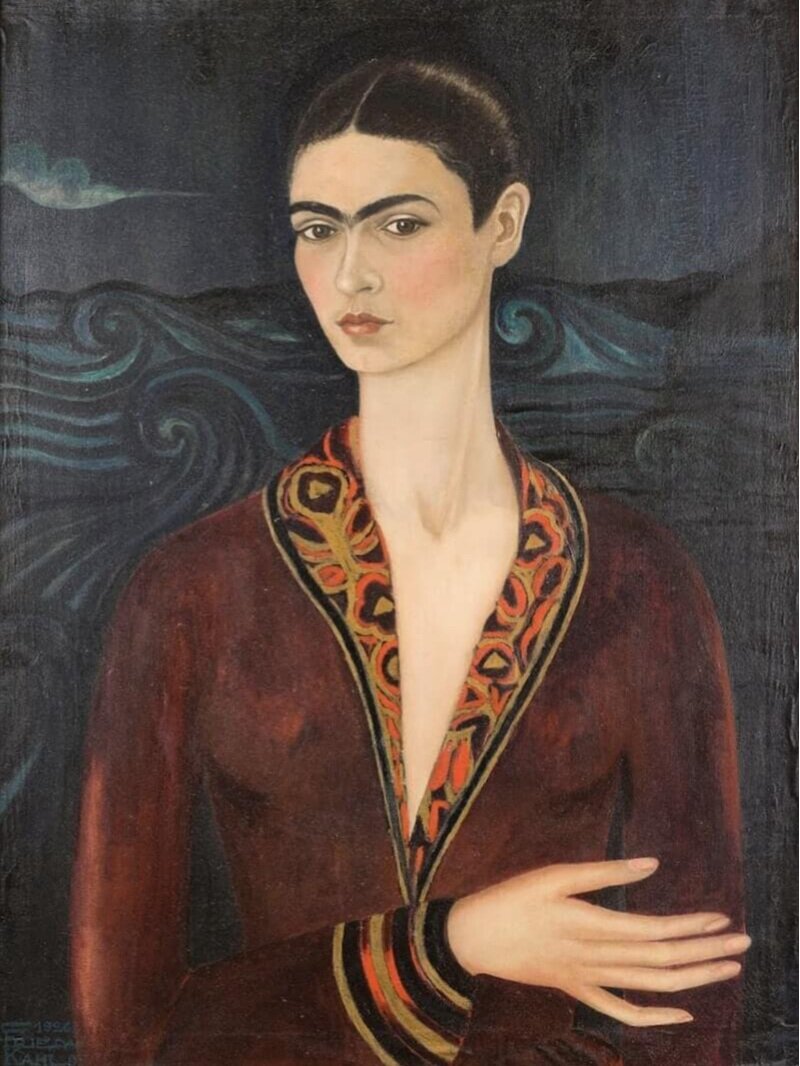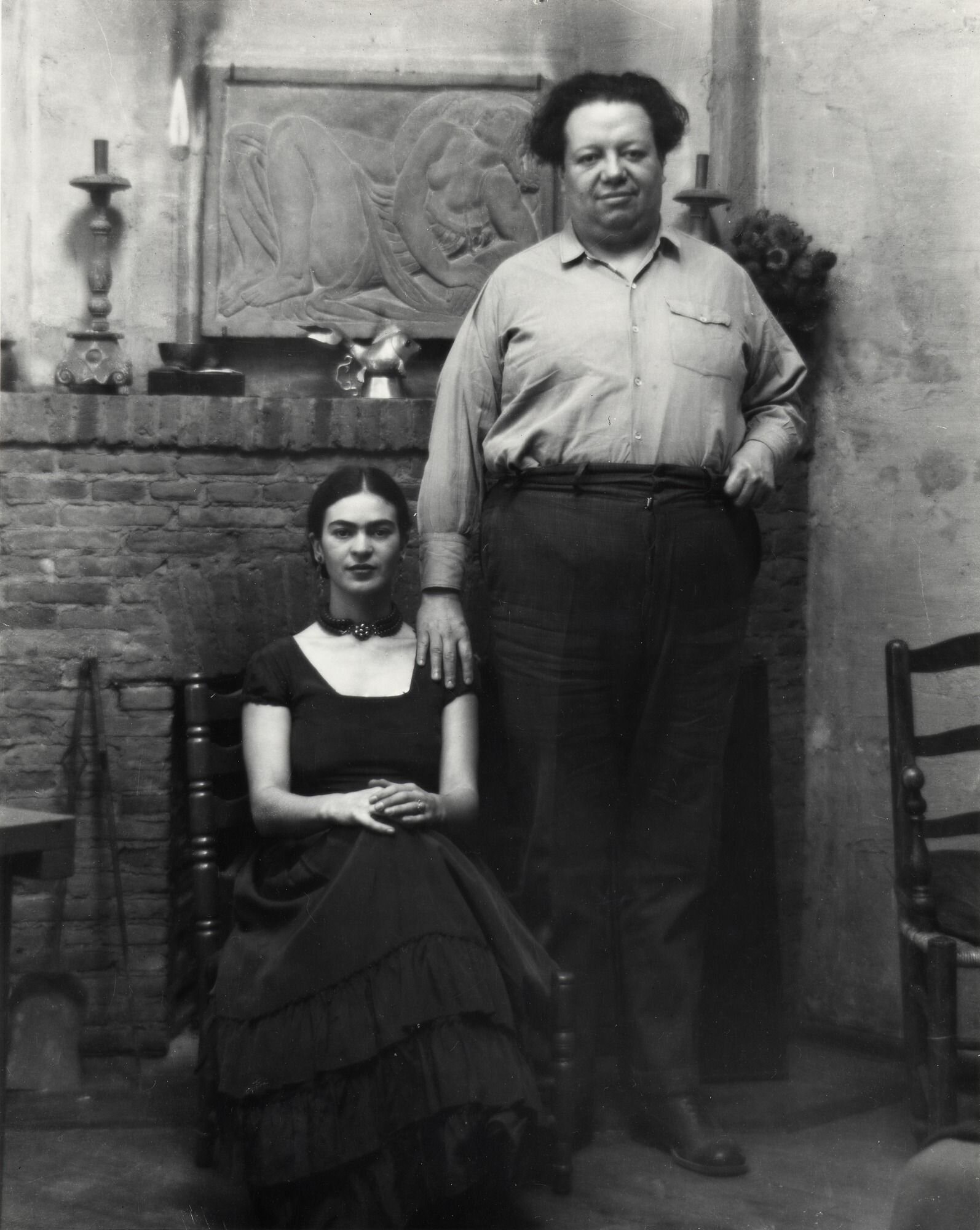
STAGE NOTES
The WICA Blog
BIOGRAPHY | MARION WOLCOTT
Jitterbugging (1939)
Marion Wolcott is known for her candid documentary photographs taken for the Farm Security Administration (FSA) during America’s Great Depression. Joining Dorothea Lange, Walker Evans, and other photographers who produced iconic images for the FSA, Wolcott documented America’s staggering wealth inequalities, its race relations, the poverty and deprivation experienced during the Depression, and the benefits to the population of federal subsidies and programs. “As an FSA documentary photographer, I was committed to changing the attitudes of people by familiarizing America with the plight of the underprivileged, especially in rural America,” she once said. Along with images of coal miners, farmers harvesting tobacco fields, and affluent spectators at the races, Wolcott also captured moments of transcendence, such as in Jitterbugging (1939), an iconic image of African-Americans dancing in a club.
Marion Post was born in New Jersey on June 7, 1910. After her parents’ divorce, she was sent to boarding school and spent summers and holidays with her mother in Greenwich Village. She met many artists and musician during her time in The Village and later studied at The New School.
Post trained as a teacher, and went to work in a small town in Massachusetts. There she saw the reality of the Depression and the problems of the poor. When the school closed, she went to Vienna to visit her sister. While there, she witnessed Nazi attacks on the Jewish population and soon after returned to America for safety. She resumed teaching, continued her photography, and became involved in the anti-fascist movement. At the New York Photo League, she met Ralph Steiner and Paul Strand who encouraged her. When Steiner learned that the Philadelphia Evening Bulletin kept sending her to do ‘ladies' stories, he presented her portfolio to Roy Stryker, head of the Farm Security Administration. Stryker was impressed by her work and hired her immediately.
In 1941, she met Leon Oliver Wolcott, deputy director of war relations for the U. S. Department of Agriculture under Franklin Roosevelt. They married, and Marion Post Wolcott continued her assignments for the FSA, but resigned shortly thereafter in February 1942. Wolcott found it difficult to fit in her photography around raising a family and a great deal of traveling and living overseas.
In the 1970s, a renewed interest in Wolcott's images among scholars rekindled her own interest in photography. In 1978, Wolcott mounted her first solo exhibition in California, and by the 1980s the Smithsonian and the Metropolitan Museum of Art began to collect her photographs. The first monograph on Marion Post Wolcott's work was published in 1983.
Marion Post Wolcott died November 24, 1990.
RELATED PROGRAMMING | ART TALKS: LANGE AND WOLCOTT | JUN 16, 2021
BIOGRAPHY | Frida Kahlo
Frida Kahlo was considered one of Mexico's greatest artists who began painting mostly self-portraits after she was severely injured in a bus accident. Kahlo later became politically active and married fellow communist artist Diego Rivera in 1929. She exhibited her paintings in Paris and Mexico before her death in 1954.
Family, Education and Early Life
Kahlo was born Magdalena Carmen Frieda Kahlo y Calderón on July 6, 1907, in Coyoacán, Mexico City, Mexico.
Kahlo's father, Wilhelm (also called Guillermo), was a German photographer who had immigrated to Mexico where he met and married her mother Matilde. She had two older sisters, Matilde and Adriana, and her younger sister, Cristina, was born the year after Kahlo.
Around the age of six, Kahlo contracted polio, which caused her to be bedridden for nine months. While she recovered from the illness, she limped when she walked because the disease had damaged her right leg and foot. Her father encouraged her to play soccer, go swimming, and even wrestle — highly unusual moves for a girl at the time — to help aid in her recovery.
In 1922, Kahlo enrolled at the renowned National Preparatory School. She was one of the few female students to attend the school, and she became known for her jovial spirit and her love of colorful, traditional clothes and jewelry.
While at school, Kahlo hung out with a group of politically and intellectually like-minded students. Becoming more politically active, Kahlo joined the Young Communist League and the Mexican Communist Party.
Frida Kahlo's Accident
Self Portrait in a Velvet Dress, 1926
On September 17, 1925, Kahlo and Alejandro Gómez Arias, a school friend with whom she was romantically involved, were traveling together on a bus when the vehicle collided with a streetcar. As a result of the collision, Kahlo was impaled by a steel handrail, which went into her hip and came out the other side. She suffered several serious injuries as a result, including fractures in her spine and pelvis.
After staying at the Red Cross Hospital in Mexico City for several weeks, Kahlo returned home to recuperate further. She began painting during her recovery and finished her first self-portrait the following year, which she gave to Gómez Arias.
Frida Kahlo's Marriage to Diego Rivera
In 1929, Kahlo and famed Mexican muralist Diego Rivera married. Kahlo and Rivera first met in 1922 when he went to work on a project at her high school. Kahlo often watched as Rivera created a mural called The Creation in the school’s lecture hall. According to some reports, she told a friend that she would someday have Rivera’s baby.
Kahlo reconnected with Rivera in 1928. He encouraged her artwork, and the two began a relationship. During their early years together, Kahlo often followed Rivera based on where the commissions that Rivera received were. In 1930, they lived in San Francisco, California. They then went to New York City for Rivera’s show at the Museum of Modern Art and later moved to Detroit for Rivera’s commission with the Detroit Institute of Arts.
Kahlo and Rivera’s time in New York City in 1933 was surrounded by controversy. Commissioned by Nelson Rockefeller, Rivera created a mural entitled “Man at the Crossroads” in the RCA Building at Rockefeller Center. Rockefeller halted the work on the project after Rivera included a portrait of communist leader Vladimir Lenin in the mural, which was later painted over. Months after this incident, the couple returned to Mexico and went to live in San Angel, Mexico.
Never a traditional union, Kahlo and Rivera kept separate, but adjoining homes and studios in San Angel. She was saddened by his many infidelities, including an affair with her sister Cristina. In response to this familial betrayal, Kahlo cut off most of her trademark long dark hair. Desperately wanting to have a child, she again experienced heartbreak when she miscarried in 1934.
Kahlo and Rivera went through periods of separation, but they joined together to help exiled Soviet communist Leon Trotsky and his wife Natalia in 1937. The Trotskys came to stay with them at the Blue House (Kahlo's childhood home) for a time in 1937 as Trotsky had received asylum in Mexico. Once a rival of Soviet leader Joseph Stalin, Trotsky feared that he would be assassinated by his old nemesis. Kahlo and Trotsky reportedly had a brief affair during this time.
Kahlo divorced Rivera in 1939. They did not stay divorced for long, remarrying in 1940. The couple continued to lead largely separate lives, both becoming involved with other people over the years.
ARTISTIC CAREER
The Suicide of Dorothy Hale, 1938
While she never considered herself a surrealist, Kahlo befriended one of the primary figures in that artistic and literary movement, Andre Breton, in 1938. That same year, she had a major exhibition at a New York City gallery, selling about half of the 25 paintings shown there. Kahlo also received two commissions, including one from famed magazine editor Clare Boothe Luce (The Suicide of Dorothy Hale), as a result of the show.
In 1939, Kahlo went to live in Paris for a time. There she exhibited some of her paintings and developed friendships with such artists as Marcel Duchamp and Pablo Picasso.
Kahlo received a commission from the Mexican government for five portraits of important Mexican women in 1941, but she was unable to finish the project. She lost her beloved father that year and continued to suffer from chronic health problems. Despite her personal challenges, her work continued to grow in popularity and was included in numerous group shows around this time.
In 1953, Kahlo received her first solo exhibition in Mexico. While bedridden at the time, Kahlo did not miss out on the exhibition’s opening. Arriving by ambulance, Kahlo spent the evening talking and celebrating with the event’s attendees from the comfort of a four-poster bed set up in the gallery just for her.
After Kahlo’s death, the feminist movement of the 1970s led to renewed interest in her life and work, as Kahlo was viewed by many as an icon of female creativity.
KAHLO’S DEATH
About a week after her 47th birthday, Kahlo died on July 13, 1954, at her beloved Blue House. There has been some speculation regarding the nature of her death. It was reported to be caused by a pulmonary embolism, but there have also been stories about a possible suicide.
Kahlo’s health issues became nearly all-consuming in 1950. After being diagnosed with gangrene in her right foot, Kahlo spent nine months in the hospital and had several operations during this time. She continued to paint and support political causes despite having limited mobility. In 1953, part of Kahlo’s right leg was amputated to stop the spread of gangrene.
Deeply depressed, Kahlo was hospitalized again in April 1954 because of poor health, or, as some reports indicated, a suicide attempt. She returned to the hospital two months later with bronchial pneumonia. No matter her physical condition, Kahlo did not let that stand in the way of her political activism. Her final public appearance was a demonstration against the U.S.-backed overthrow of President Jacobo Arbenz of Guatemala on July 2, 1954.
SOURCE: Biography
BIOGRAPHY | DAVID LAWRENCE
Jacob Lawrence (1917-2000) was one the most renowned African American artist of his time. Known for producing narrative collections like the Migration Series and War Series, he illustrated the African American experience using vivid colors set against Black and brown figures. He also served as a professor of art at the University of Washington for 15 years.
Early Life and Career
Born in Atlantic City, New Jersey, on September 7, 1917, Jacob Lawrence moved with his parents to Easton, Pennsylvania, at the age of two. After his parents split in 1924, his mother sent him, along with two other siblings, to a foster care facility in Philadelphia, while she looked for work in New York. At 13, Lawrence and his siblings reunited with their mother who was residing in Harlem.
Encouraging him to explore the arts, Lawrence's mother enrolled him at Utopia Children’s Center, which had an after-school art program. Although he dropped out of school at the age of 16, he continued taking classes at the Harlem Art Workshop with under the mentorship of artist Charles Alston and frequently visited the Metropolitan Museum of Art.
'The Migration Series'
In 1937 Lawrence won a scholarship to the American Artists School in New York. When he graduated in 1939, he received funding from the Works Progress Administration Federal Art Project. He had already developed his own style of modernism, and began creating narrative series, painting 30 or more paintings on one subject. He completed his best-known series, Migration of the Negro or simply The Migration Series, in 1941. The series was exhibited at Edith Halpert's Downtown Gallery in 1942, making Lawrence the first African American to join the gallery.
World War II and After
At the outbreak of World War II, Lawrence was drafted into the United States Coast Guard. After being briefly stationed in Florida and Massachusetts, he was assigned to be the Coast Guard artist aboard a troopship, documenting the war experience as he traveled around the world. During this time, he produced close to 50 paintings but all ended up being lost.
'War Series'
When his tour of duty ended, Lawrence received a Guggenheim Fellowship and painted his War Series. He was also invited by Josef Albers to teach the summer session at Black Mountain College in North Carolina. Albers reportedly hired a private train car to transport Lawrence and his wife to the college so they wouldn’t be forced to transfer to the “colored” car when the train crossed the Mason-Dixon Line.
When he returned to New York, Lawrence continued honing his craft but began struggling with depression. In 1949 he admitted himself into Hillside Hospital in Queens, staying for close to a year. As a patient at the facility, he produced artwork that reflected his emotional state, incorporating subdued colors and melancholy figures in his paintings, which was a sharp contrast to his other works.
In 1951, Lawrence painted works based on memories of performances at the Apollo Theater in Harlem. He also began teaching again, first at Pratt Institute and later the New School for Social Research and the Art Students League.
Teaching and Commissions
In 1971 Lawrence accepted a tenured position as a professor at University of Washington in Seattle, where he taught until he retired in 1986. In addition to teaching, he spent much of the rest of his life painting commissions, producing limited-edition prints to help fund nonprofits like the NAACP Legal Defense Fund, the Children’s Defense Fund and the Schomburg Center for Research in Black Culture. He also painted murals for the Harold Washington Center in Chicago, the University of Washington and Howard University, as well as a 72-foot mural for New York City’s Times Square subway station.
Death
Lawrence painted until a few weeks before he died, on June 9, 2000.
SOURCE: Biography
RELATED PROGRAMMING | ART TALKS: DAVID LAWRENCE | MAR 10, 2021
98260
A streaming program designed to keep us connected through thoughtful conversations, news, and entertainment.
98260 keeps us connected through thoughtful conversations, news, and entertainment. We hope you enjoy!
EPISODE 06
This episode, WICA Artistic Director Deana Duncan talks with improv artist (and co-worker) Billy Tierney about his craft and summer performances and classes. Billy shares his technique and talents with special guest Chris Harshman during rounds of vocal and musical improvisations.
Air date: June 19, 2020
RELATED PROGRAMMING | IMPROV WITH BILLY | JUL 03
EPISODE 05
Travel writer Sue Frause has a conversation with Hedgebrook's Interim Executive Director, Elise Miller, about her career and the organization's history, mission, programs, alumnae, and Radical Hospitality.
Air Date: June 01, 2020
Episode 04
Sue Frause talks with Saratoga Orchestra Executive Director, Larry Heidel; Char Brown and Brittany Falso from Whidbey Island Dance Theatre; and Whidbey Children's Theatre's Cate Cassee. Each of Sue's guests discuss how the organizations (and artists) have been impacted by the current health crisis and their responses to it.
Air date: May 22, 2020
Episode 03
Sue Frause visits with members of Langley Creates and discusses what Langley's new designation as a "Creative District" means for our island's economy.
Air date: April 30, 2020
Episode 02
Sue Frause mixes up a Braeburn Bloody Mary and has a chat with Langley restaurateurs Lisa Carvey and Jenn Jurriaans.
Air date: April 06, 2020
Episode 01
Sue Frause and WICA's Verna Everitt have a chat from their homes about spring and summer events, Whidbey Island Film Festival, DjangoFest NW, and the center’s upcoming 25th Anniversary.
Air date: March 30, 2020
An Incomplete History of Protest Art
Protest Art is a broad term that refers to creative works that are produced by artists (and activists) in response to global events, social movements, and acts of oppression, violence, injustice, and inequalities.
Many variations of protest art can be found throughout the history, so it is difficult to establish the beginning of this politically engaging artistic expression. Conceptual art and performance activist art was majorly influenced by Dada, an movement formed during the First World War in Zurich in reaction to the horrors and folly of the war. The art, poetry, and performance produced by dada artists is often satirical and nonsensical in nature. When it comes to fine art, Picasso’s Guernica (1937) based on the Spanish Civil War and capturing its atrocities and inhumanity, served as an inspiration for the modern human rights movement.
During the 1960s and 1970s, many creatives that can be seen as protest artists visibly opposed the Vietnam War and produced artworks that raised awareness and called for the responsibility.
























